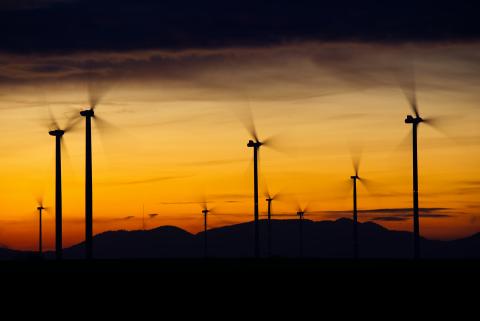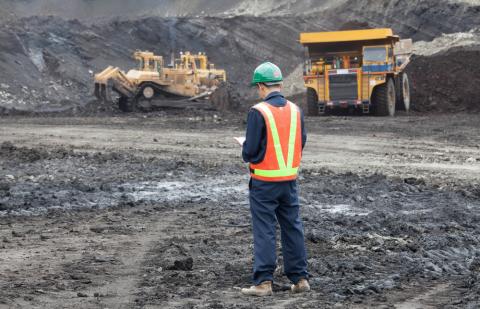From the Fossil-Fuel Center of the World, a Call to Renewables and Energy Efficiency
In a must-read report released this week on fast-changing energy markets, the National Bank of Abu Dhabi signals a once-in-a-lifetime opening for investors in Middle Eastern renewables and energy efficiency.
The report, “Financing the Future of Energy: The Opportunity for the Gulf’s Financial Services Sector” carries the imprimatur of researchers at the University of Cambridge and PricewaterhouseCoopers. Australian readers will be familiar with the author of its forward, none other than Alex Thursby, CEO of the National Bank of Abu Dhabi, and previously the very successful chief executive of international & institutional banking at ANZ (Australia & New Zealand Banking Group Ltd).
What really jumps out, though, is where the report comes from, namely the epicenter of the fossil-fuel world. And while it focuses on investment opportunities in the political and economic union made up of the Gulf Cooperation Council—Bahrain, Kuwait, Qatar, Oman, Saudi Arabia and the United Arab Emirates—its conclusions can be carried over in many ways to other parts of the world. Asia and Africa are mentioned in particular.
Here are the “four pillars” of awareness the paper presents:
- “There is a pressing need for investment/finance of both energy generation and energy efficiency improvements over the next 10-15 years, both to secure the needed energy and significantly improve its sustainability … It opens finance opportunities on the scale of tens of billions of U.S. dollars per year in the region and hundreds of billions (to a trillion) U.S. dollars per year globally.”
- “We do not need to wait for the required technologies to appear. Low carbon, sustainable technologies are already on the market, with costs that are dropping rapidly as the industry matures and grows. They are already market-tested and cost effective, especially for solar PV and on-shore wind. This situation is robust against changes in the price of oil.”
- “The West-East Corridor (Africa through the Middle East to Asia) offers a significant opportunity to extend the GCC region’s finance expertise onto the global stage. This corridor will require very large increases in energy generation as well as innovations in energy efficiency so that energy can be used wisely in these fast growing economies. The current lack of infrastructure, as well as the ability of low carbon solutions to attract supplemental finance through the Clean Development Mechanism and related international programs, means there will be continued growth in renewables, which already represent more than half of the global investment in new energy generation over the past several years.”
- “Government policies both in the GCC region and along the West-East Corridor are not yet optimal to unlock this potential finance. Working together with governments, the finance community can play a crucial role in defining the next generation of policies to deliver on the ambitious economic, energy and sustainability visions of the region.”
The report is targeted at banks and investors in the region, although its authors note wryly “it will also be of interest to the energy sector and government partners more widely.”
Indeed.
One of the takeaways is that institutional investors and banks must be proactive about this opportunity and must nudge governments toward “greater stability and support for sustainability ambitions and policies,” a trend that would summon a stampede of investors (“the finance sector will be there to back projects that are consistent with that support”).
The report also illustrates a basic truth about energy development and profitability: value creation is achieved at the nexus of public and private interests. Successful deployment of renewables and development of energy efficiency is more about setting a proactive policy framework that adds balance to an old system that has promoted fossil-fuel development to the detriment of innovation in other energy sectors.
The document offers detail on how Germany has already proven the national viability of renewables, how popular sentiment against fossil fuels is gaining momentum in China’s huge cities, and how solar- and wind-energy development, are now on parity cost-wise with carbon-based energy. It even suggests practical tips on investing, including notes on how “green sukuks” would work (sukuks are Shar’iah-compliant bonds).
The report is loaded with numbers, of course, but perhaps the two most notable ones are these:
- 39 percent, as in the expected increase globally in renewable-energy investment once 2013-2018 totals are compiled.
- $1 trillion, as in the amount of renewable-energy financing required in the region, an enormous sum, to be sure, but not as big as the global demand.
Tim Buckley is IEEFA’s director of energy finance studies, Australasia.











